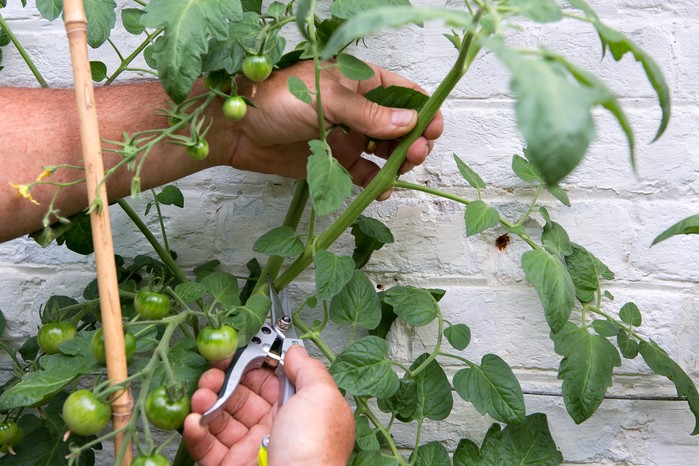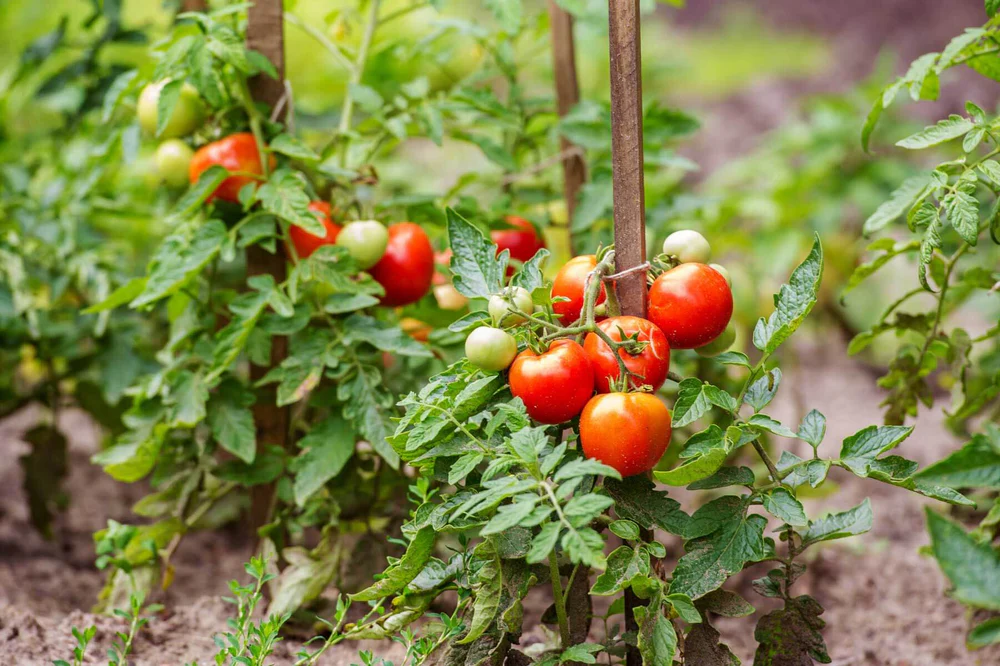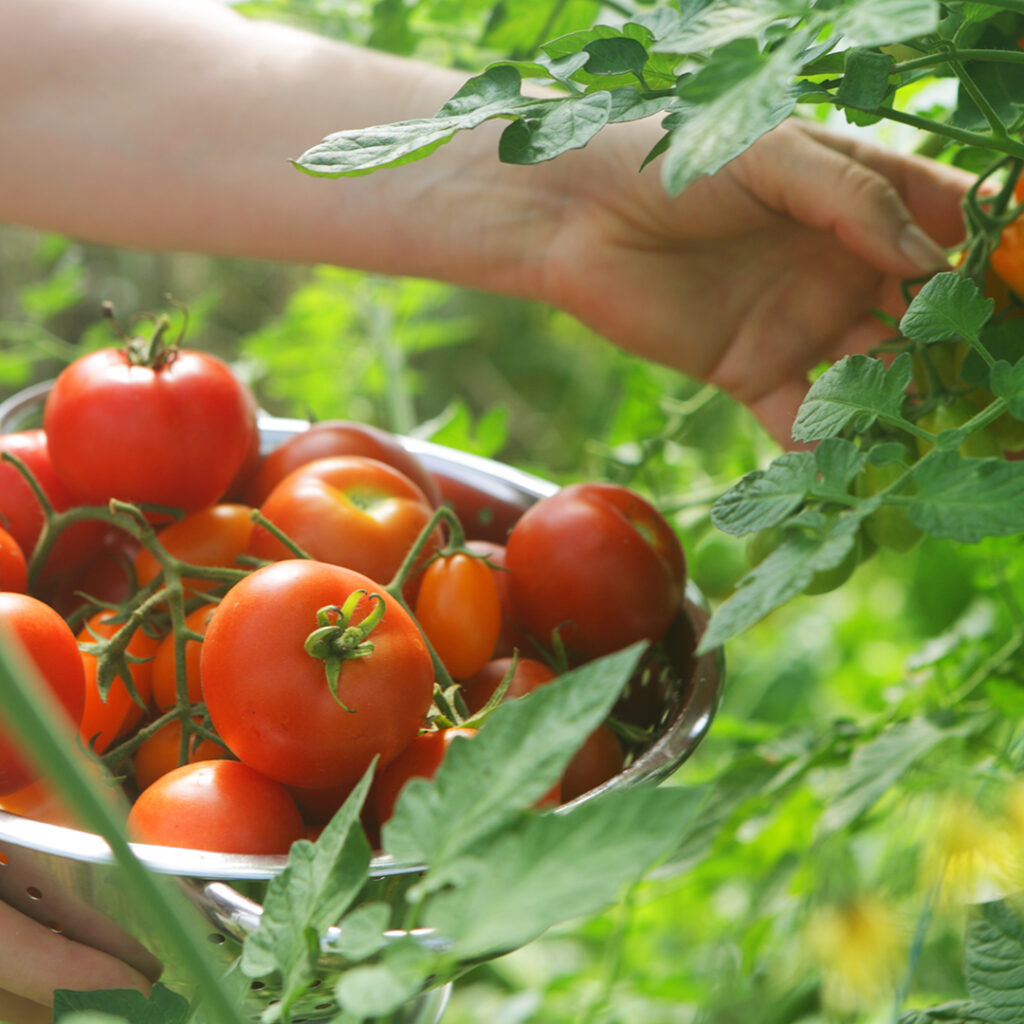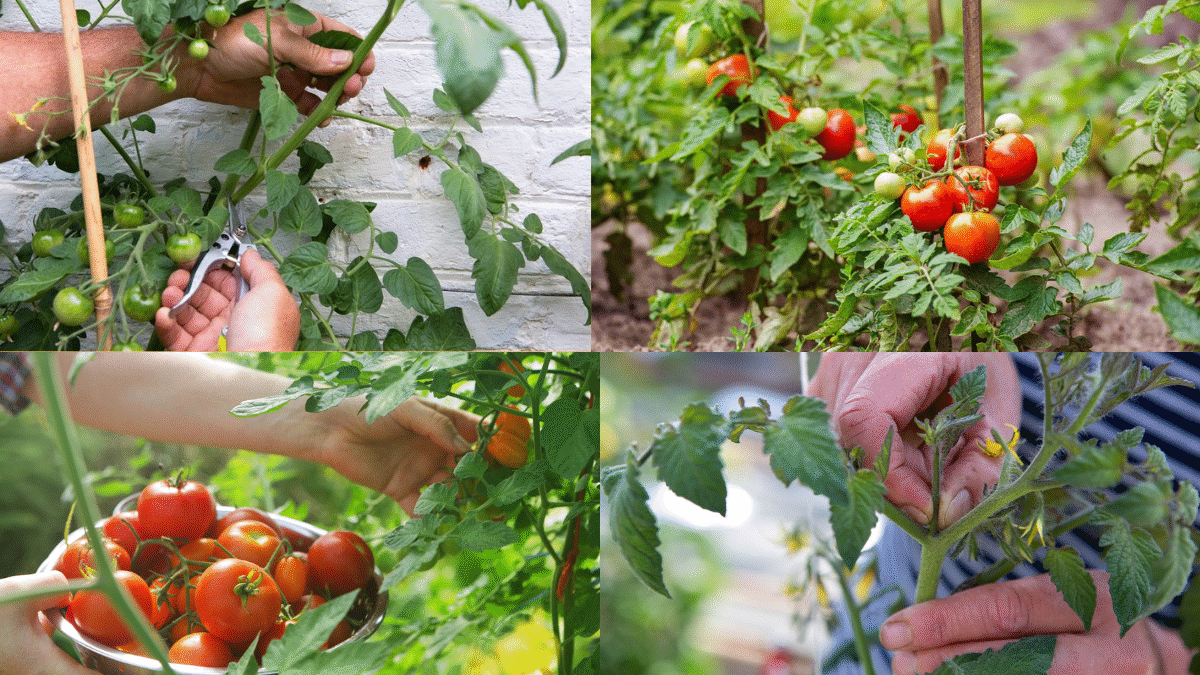There’s nothing quite like the taste of a sun-ripened tomato fresh from the garden. Whether you grow them for salads, sauces, or snacking straight off the vine, one simple gardening technique can dramatically boost your harvest: pruning. Done right, pruning tomato plants not only improves airflow and reduces disease but also directs the plant’s energy toward producing bigger, better, and more flavorful fruit.
In this detailed guide, we’ll break down everything you need to know about how to prune tomato plants — from why it matters, when to do it, to exactly which stems to snip. By the end, you’ll have all the confidence you need to grow thriving tomato plants bursting with top-quality fruit.

Why Prune Tomato Plants?
Many beginner gardeners overlook pruning, assuming that more leaves mean more fruit. However, unpruned tomato plants often grow into tangled, overcrowded masses that:
- Encourage disease by trapping moisture and blocking airflow.
- Divert energy into producing excess foliage rather than ripening fruit.
- Increase the risk of pests hiding in the dense growth.
- Cause smaller, lower-quality tomatoes due to overproduction.
Pruning helps by:
- Improving light penetration and airflow.
- Reducing the chance of fungal diseases like blight.
- Directing the plant’s energy into producing fewer but bigger, juicier, and tastier tomatoes.
- Making harvesting easier.
Determinate vs. Indeterminate Tomatoes
Before you pick up your pruning shears, it’s important to know what type of tomato plant you’re growing:
Determinate (Bush) Tomatoes
- Grow to a certain height and stop.
- Produce fruit in one concentrated harvest.
- Require little to no pruning except for removing dead or diseased leaves.
Examples: Roma, Celebrity, Bush Early Girl
Indeterminate (Vining) Tomatoes
- Keep growing, flowering, and fruiting until killed by frost.
- Benefit greatly from regular pruning to maintain size, health, and fruit quality.
Examples: Beefsteak, Brandywine, Sungold, Cherokee Purple

When to Start Pruning Tomato Plants
Begin pruning once your tomato plants are well established, about 2–3 weeks after transplanting or when they reach 12–18 inches tall. Continue pruning throughout the growing season, especially for indeterminate varieties.
Pro tip:
Prune on a dry, sunny day to reduce the risk of disease spreading through open cuts.
Essential Pruning Tools
You don’t need a fancy toolkit to prune tomatoes, but it’s crucial to keep your tools clean to prevent disease.
- Sharp pruning shears or scissors for larger stems.
- Your fingers for pinching off small suckers.
- Disinfectant wipes or rubbing alcohol to clean tools between plants.
How to Identify Tomato Suckers
The key to effective pruning is removing suckers — the shoots that sprout from the joint where a leaf stem meets the main stem.
Why remove suckers?
Left unchecked, suckers grow into large branches that compete for nutrients and energy, resulting in smaller, later fruit.
How to spot them:
- Look for small shoots emerging at a 45-degree angle between the main stem and a leaf branch.
- They often start as tiny, pointed stems but grow rapidly.
Step-by-Step: How to Prune Tomato Plants
1. Start at the Bottom
- Remove the bottom 6–12 inches of leaves and suckers once the plant starts fruiting.
- This improves airflow near the soil, reducing the risk of soil-borne diseases.
2. Remove Suckers Regularly
- Pinch off suckers when they’re 2–4 inches long.
- Use your fingers for small suckers and sterilized shears for thicker ones.
Tip: Removing them when small is easier on the plant and minimizes wounds.
3. Thin Out Excess Foliage
- Cut away large, overly dense leaves that block sunlight from reaching fruit clusters.
- Prioritize leaves shading ripening tomatoes.
4. Top the Plant (Optional)
- For indeterminate varieties, consider topping the plant about 4–6 weeks before your expected first frost.
- Snip off the growing tip of the main stem to stop vertical growth and direct the plant’s energy into ripening existing fruit.

Common Pruning Techniques
There are a few pruning styles you can follow depending on how you want your plant to grow:
Single Stem (Leader) Method
- Remove all suckers and side branches, leaving just one main stem.
- Ideal for small spaces and staking systems.
Two-Stem Method
- Leave the main stem and one strong sucker just below the first flower cluster.
- Balance between fruit production and plant size.
Three-Stem Method
- Keep the main stem and two suckers for a slightly bushier plant with a good harvest.
Note: Indeterminate tomatoes typically benefit most from these pruning styles.
What Not to Prune
While it’s important to remove unnecessary growth, over-pruning can expose fruit to sunscald (pale, sun-damaged spots).
Avoid removing:
- All the leaves above fruit clusters.
- Too many leaves at once (never remove more than 25-30% of the plant in a single pruning).
- The growing tip early in the season (unless topping before frost).
Post-Pruning Care
After pruning:
- Water at the base to avoid wetting leaves and spreading disease.
- Mulch around the plant to retain soil moisture and suppress weeds.
- Monitor plants for signs of stress or disease.
- Continue feeding with a balanced tomato fertilizer.

Common Mistakes to Avoid
- Pruning Determinate Tomatoes Too Much
- Minimal pruning is needed; over-pruning reduces yield.
- Ignoring Suckers on Indeterminate Varieties
- Leads to tangled plants and small fruit.
- Pruning Wet Plants
- Increases the spread of fungal and bacterial diseases.
- Removing too many leaves
- Increases risk of sunscald on fruit.
Benefits of Pruning Tomato Plants
Proper pruning doesn’t just improve fruit size and yield. It also:
- Extends harvest time for indeterminate types.
- Prevents fungal diseases like early blight and septoria leaf spot.
- Makes harvesting easier by opening up the plant.
- Reduces pest problems by minimizing hiding spots.
Final Thoughts
If you’ve been letting your tomato plants grow wild and unchecked, this is your sign to grab your pruners and get to work. Pruning might seem intimidating at first, but it’s one of the simplest ways to ensure a healthier, more productive garden.
By removing unnecessary suckers, thinning overcrowded foliage, and shaping your plants strategically, you’ll enjoy bigger, better, and more flavorful tomatoes all season long. And remember — a little consistent maintenance goes a long way in the garden.





Leave A Comment